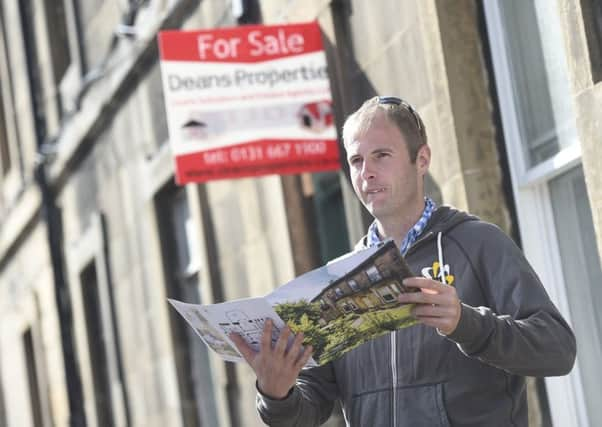Jeff Salway: No shelter from the housing shortage


A fresh fall in the number of homes going on the market threatens to drive prices “‘sharply upwards” and deepen the housing crisis in Scotland.
The imbalance between demand and supply is becoming increasingly severe in the east of Scotland in particular, making it even harder for first-time buyers to secure a foothold on the property ladder.
Advertisement
Hide AdAdvertisement
Hide AdThe issue has been brought into fresh focus again this week after Shelter Scotland warned that the country “risks creating a ‘generational gulf’ between the housing haves and have-nots”.
Property sales are “massively outstripping” the number of properties being put on the market in the early months of 2016, according to Robert Carroll, managing director of MOV8 Real Estate.
“People seem reluctant to put their own properties on the market at the moment because they worry they will struggle to find a property they want to buy,” he said.
“If the quantity of properties selling continues to outstrip the supply of new properties coming to the market, there is a danger that it will drive prices sharply upwards, making it even harder for property buyers to afford their new home.”
The number of homes sold by the firm in the second half of last year exceeded the number it put for sale by 24 per cent. The gap rises to 57 per cent for the final three months of the year.
“The majority of properties are now selling for a price that is equal to, or in excess of, the home report valuation,” said Carroll. “The shortage of properties on the market at the beginning of 2016 has meant that selling times have been tumbling.”
The Edinburgh Solicitors’ Property Centre (ESPC) reports similar patterns. It said the number of homes put up for sale in east central Scotland was 15.1 per cent lower between November 2015 and January 2016 than in the same period a year earlier. It also reported that the supply of homes to buy fell 4.4 per cent in the six months to the end of January.
The fall was due partly to the December 2014 announcement of the land and buildings transaction tax (LBTT), the new Scottish property tax that took effect last April.
Advertisement
Hide AdAdvertisement
Hide AdMaria Botha-Lopez, business analyst for the ESPC, said: “At that time, sellers decided to bring their properties on to the market to meet buyer demand for purchasing homes prior to the effective date of the new tax rates.”
But the LBTT is just part of the explanation. The bigger problem is that too few affordable homes are being built in Scotland, according to Dr John Boyle, director of research at Rettie & Co.
“Unfortunately, we are building at levels not much more than post World War 2,” he pointed out.
“Despite a lot of heat, there is not much light in the housing debate. Many of the problems stem from the way we plan and build and this needs reform.”
The chronic lack of supply features in the latest research from Shelter Scotland. Almost 90 per cent of respondents to a survey commissioned by the housing and homelessness charity agreed with the statement that it would be “harder for the children of today to buy or rent a home in the future than it is today”.
The report, marking the launch of Shelter Scotland’s new Manifesto for Homes, wants the Scottish government to build at least 12,000 new affordable homes each year for the next five years.
Graeme Brown, director of Shelter Scotland, said: “Scotland’s housing crisis risks creating a devastating generational gulf between the housing haves and have nots. The high cost of housing and the stuttering supply of new affordable homes set against high and rising demand are at the heart of this crisis.”
The generational gulf in housing is widening for several reasons, said Boyle.
Advertisement
Hide AdAdvertisement
Hide Ad“House prices have remained stubbornly high (even during a recession), wages have remained suppressed, there is a big shortage of new build (across all tenures), mortgage availability is much more restricted, and younger people are more itinerant and many do not want to be saddled with a mortgage too early on in their lives.”